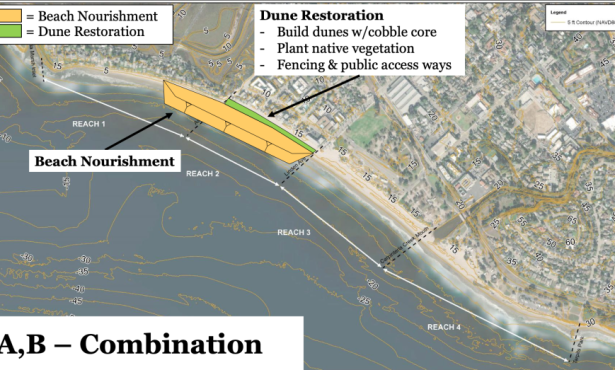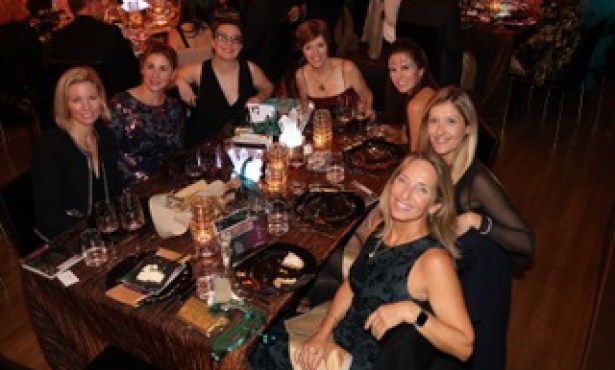‘Artists & Architects on the Road: Works from the University Art Museum’ Opens July 7 at Sullivan Goss Gallery
The exhibition, comprising nearly 40 photographs, paintings, prints, drawings, and collages, is drawn from the museum’s Fine Art and Architecture & Design collections.
The 11 artists and architects featured in the exhibition traveled from the United States at various times during the 20th century, to places as far away as North Africa and Europe, and as close as Mexico and Palm Springs. All were affected by what they saw, and their experiences were reflected in their subsequent work.
Painter Fernand Lungren (1857-1932), who settled in Santa Barbara in 1907, was inspired by a visit to Egypt to paint the Southwestern desert scenes for which he is well known. He made pencil sketches of people and landscapes during his travels, followed by paintings completed after he returned home. “Pyramids” (oil on canvas, 1901) and “Along the Shore” (oil on canvas, 1900-01), showing boats on the Nile, are accompanied by studies including “Bank of Nile: Boats from the Egyptian Series” and “Fishermen from the Egyptian Series” (both graphite on paper, circa 1900).
Also included in the exhibition are works by Lutah Maria Riggs (1896-1984), the Berkeley-trained architect who went to high school in Santa Barbara and returned to work with George Washington Smith until his death in 1930. Riggs accompanied Smith and his wife on a trip to Mexico in 1922 and made sketches and drawings of architectural details that were later used in buildings designed by Smith. Represented by works including “Church in Mexico” (pencil and watercolor on board), “Iron work, Cuernavaca” (pencil on paper), and “Piers, columns, etc., Hotel Mordos, Cuernavaca” (pencil on paper), all circa 1922, these sketches possibly were intended for publication as a reference work, although no such work appeared.
Another architect influenced by his travels was Rudolph Schindler, whose archive is part of the Architecture & Design Collection. Born in Vienna, Schindler came to the United States to study with Frank Lloyd Wright. The drawings he made of adobe buildings in New Mexico were a source of inspiration for his now famous Kings Road house in Los Angeles.
Irma Cavat, professor emerita of art at UCSB, lived in Paris during a sabbatical in 1978 and spent a lot of time exploring the city. The works in the exhibition reflect how she passed her time there: “Untitled (Theater)” and “Untitled (Party)” (both gouache and collage, 1978), and “Untitled (Going to see Gauguin)” (gouache, collage and colored pencil, 1978). “Grand Canyon,” a watercolor by Alfred Bendiner, circa 1960, is the Hungarian artist and author’s humorous take on the popular tourist destination.
Also included in the exhibition are works by architects Carleton Monroe Winslow, Sr., Maynard Lyndon, Albert Frey, George Washington Smith, and Robert Stacy-Judd (with a photograph of Judd by Donald Biddle Keyes).
“Artists & Architects on the Road: Works from the University Art Museum” opens at Sullivan Goss on July 7 with a First Thursday opening reception, and runs through August 28. This marks the first time that the University Art Museum has exhibited in downtown Santa Barbara, and is part of a series of satellite exhibitions taking place while the Museum is closed for seismic retrofitting.


